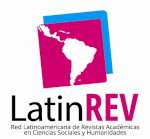PLAYING IN EARLY EDUCATION IN THE CONTEXT OF BNCC: an integrative review
DOI:
https://doi.org/10.47180/omij.v5i1.295Keywords:
Play. BNCC. Child educationAbstract
The act of playing allows children to learn different things, allowing them to appropriate knowledge, developing skills related to the sphere of language, cognition, values and life in society. This article aims to analyze playing in Early Childhood Education in the context of the BNCC, in articles published in the years 2021 and 2022. For that, an integrative and documentary bibliographical research was carried out, having as reference the document of the National Curricular Base for the Child education. First, a brief theoretical study is presented on the conception of children and childhood in the historical aspect, the characteristics of institutions designed for children from zero to six years of age, early childhood education in Brazilian legislation and the importance of playing as a right of early childhood learning and development. Therefore, it is concluded that playing in childhood is an essential part of the child's learning and integral development in the physical, social, cultural, affective, emotional and cognitive aspects.
Downloads
References
ALMEIDA, P. N. de. Educação lúdica: técnicas e jogos pedagógicos. São Paulo, SP: Loyola, 2008.
AQUINO. L. As políticas sociais para a infância a partir de um olhar sobre a história da criança no Brasil. In: Romam, e. d.; Steyer, v. e. A criança de 0 a 6 anos e a educação infantil: um retrato multifacetado. Ulbra, 2001.
ARIÈS, P. História Social da criança e da família. Rio de Janeiro: LTC, 1981.
ARROYO, M. G. Corpos resistentes produtores de culturas corporais. Haverá lugar na Base Nacional Comum? Motrivivência, v. 28, n. 48, p. 15-31, set., 2016. DOI: https://doi.org/10.5007/2175-8042.2016v28n48p15
BARBOSA, R. F. M., DEL RIO MARTINS, R. L., & MELLO, A. DA S. (2019). A educação infantil na base nacional comum curricular: avanços e retrocessos. Movimento-Revista de educação, n. 10, 147-172. Disponível em: https://doi.org/10.22409/mov.v0i10.536. Acesso em: 27 out. de 2022. DOI: https://doi.org/10.22409/mov.v0i10.536
BARBOSA, R. F. M; MARTINS, R. L; MELLO, A. S. Brincadeiras lúdico-agressivas: Tensões e possibilidades no cotidiano na Educação Infantil. Movimento, Porto Alegre, p. 159-170, mar. 2017. DOI: https://doi.org/10.22456/1982-8918.65259
BASTOS. M. H. C. Jardim de Crianças – o pioneirismo do Dr. Menezes Vieira (1875- 1887). In: MONARCHA. C. Educação da infância brasileira 1875 – 1983. Campinas: Autores Associados, 2001.
BRASIL. Constituição da República Federativa do Brasil. Brasília, DF: Senado Federal, 1988, 305p.
BRASIL. Estatuto da criança e do Adolescente. Brasília. Lei 8069, de 13 de julho de 1990.
BRASIL. Ministério da Educação. Base Nacional Comum Curricular. Disponível em: http://basenacionalcomum.mec.gov.br/. Acesso em: 27 set. de 2022.
BRASIL. Referencial Curricular Nacional para a Educação Infantil. Ministério da Educação e do Desporto, Secretaria de Educação Fundamental. Brasília, MEC/SEF, 1998.
CARVALHO, E. M. G. Educação infantil: percurso, dilemas e perspectivas. Ilhéus: Editus, 2003.
COOPER, H. M. Interating research: um guia para revisões de literatura. 2.ed. Newbury Park. Sage, 1989.
DIDONET, Vital. Creche a que veio... para onde vai... In: DIDONET, Vital (org). Em Aberto – Educação Infantil: a creche, um bom começo. Instituto Nacional de Estudos e Pesquisas Educacionais, v. 18, n.73, Brasília, 2001, p. 11-27.
GONÇALVES, R. M; PEIXOTO, L. F. Em defesa dos currículos praticados pensados nos cotidianos escolares. In: REUNIÃO CIENTÍFICA ANPED NORTE, 1., 2016, Belém. Anais... Belém: Anped, 2016, p. 2009-2021.
HUIZINGA, J. Homo Ludens: o jogo como elemento de cultura. São Paulo, Editora Perspectiva, 2001.
KRAMER, S; LEITE, M. I. Infância: Fios e Desafios da Pesquisa. São Paulo: Papirus. 2003.
KISHIMOTO, T. M. Jogo, brinquedo, brincadeira e a educação. 7. ed. São Paulo: Cortez, 1996.
KUHLMANN, J. M. Infância e educação infantil: uma abordagem histórica. 5. ed. Porto Alegre: Mediação, 2010.
VALADARES, J. A. MOREIRA, M. A. (2009). A teoria da aprendizagem significativa: sua fundamentação e implementação. Coimbra: Edições Almedina. 133p.
OLIVEIRA, V. B. O brincar e a criança do nascimento aos seis anos. Petrópolis, RJ: Vozes, 2000.
OLIVEIRA. Z. M. R. Educação infantil: fundamentos e métodos. São Paulo: Cortez, 2005.
ROUSSEAU, J. J. Emílio ou da educação. São Paulo: Martins fontes, 1994.
VYGOTSKI, L. S. A construção do pensamento e da linguagem. São Paulo: Martins Fontes, 2009.
VYGOTSKY, L.S. A formação social da mente. 7. ed. São Paulo: Martins Fontes, 2007.
Downloads
Published
How to Cite
Issue
Section
License
Copyright (c) 2024 Open Minds International Journal

This work is licensed under a Creative Commons Attribution-NonCommercial-NoDerivatives 4.0 International License.
The authors declare that any work submitted, if accepted, will not be published elsewhere, in English or in any other language, and even electronically, unless it expressly mentions that the work was originally published in the Journal.













